When it comes to ensuring a smooth and successful construction project, a well-structured cleanup agreement is essential. Not only does it enhance safety and aesthetics, but it also fosters strong relationships among contractors, clients, and workers. A clear delineation of responsibilities can transform a chaotic site into a neat and organized space, paving the way for future success. So, let's dive deeper into the components of an effective cleanup agreement that can guide you through this vital aspect of construction management.

Scope of Work
The scope of work for the construction site cleanup focuses on ensuring that all debris, waste materials, and other hazardous substances are effectively removed and disposed of following safety regulations. Specific tasks include the removal of construction debris such as wood scraps, metal pieces, and concrete remnants, with an emphasis on minimizing environmental impact. Site cleanup will also involve the proper disposal of hazardous materials like paint thinners, solvents, and other chemicals, adhering to the standards set by the Environmental Protection Agency (EPA). Workers will be required to wear personal protective equipment (PPE) such as gloves and masks throughout the cleanup process to maintain safety. Cleanup will occur weekly, aiming for a thorough assessment and execution of cleanliness across the site located in downtown Chicago, a busy urban area. All activities will be documented and reported to the project manager to ensure accountability and compliance with local regulations.
Payment Terms
Payment terms for construction site cleanup agreements are crucial for ensuring clear financial transactions between the contractor and the cleaning service provider. Standard terms often include a specified total amount for services rendered, due dates for payments, and acceptable payment methods such as checks, credit cards, or electronic transfers. A provision for upfront deposits, usually ranging from 10% to 30% of the total fee, is common to secure the service commitment. Additionally, late payment penalties, typically an extra 1.5% per month after the due date, may be included to encourage timely payments. Clear invoices itemizing cleanup activities, hours worked, and any additional charges for unforeseen issues, like hazardous materials removal, can help maintain transparency and accountability throughout the project.
Duration and Timeline
The construction site cleanup process typically spans approximately two weeks, beginning on March 1, 2023, and concluding on March 15, 2023. During this period, various tasks are scheduled, including debris removal, dust control, and the proper disposal of hazardous materials. Daily operations start at 7 AM and conclude at 5 PM, with a planned inspection on March 14 to assess the progress and ensure compliance with environmental regulations. Specific milestones involve completing debris removal by March 7, followed by site washing and surface preparation by March 10. All activities must align with safety standards outlined by the Occupational Safety and Health Administration (OSHA) to ensure a secure working environment and minimize risks of accidents or injuries.
Compliance and Safety Regulations
A construction site cleanup agreement ensures adherence to compliance and safety regulations, crucial for maintaining a safe working environment. Effective cleanup involves removal of debris, such as wood, metal scraps, and hazardous materials, minimizing risks like accidents and injuries. Safety protocols, including the use of personal protective equipment (PPE) like helmets and gloves, are essential in preventing injuries. Compliance with local regulations, often outlined in municipal codes, is mandatory for avoiding legal liabilities. Documentation of the cleanup process, including photographs and logs, serves as proof of adherence to safety standards, fostering accountability among workers and contractors.
Termination Clause
The termination clause in a construction site cleanup agreement outlines conditions under which either party may terminate the agreement. Notice period usually specified, often ranging from five to thirty days, is required before termination. If either party fails to adhere to the terms, such as safety regulations or payment schedules, the other party may initiate termination. Additionally, in cases of unexpected circumstances, such as natural disasters or significant delays, parties may agree to terminate without penalty. Documentation must be provided as proof of termination reasons, ensuring transparency and accountability throughout the cleanup process.

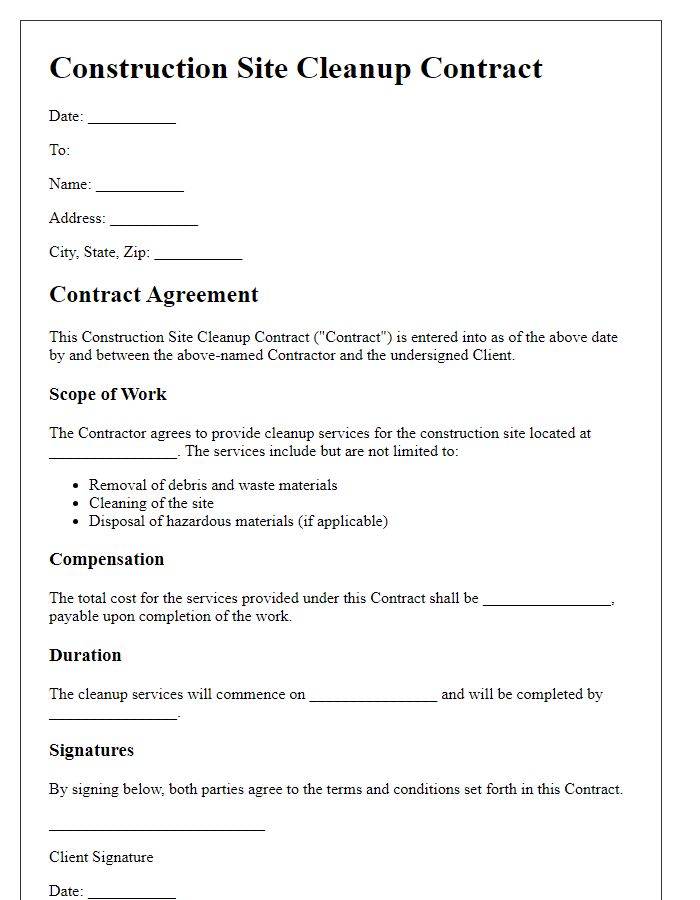
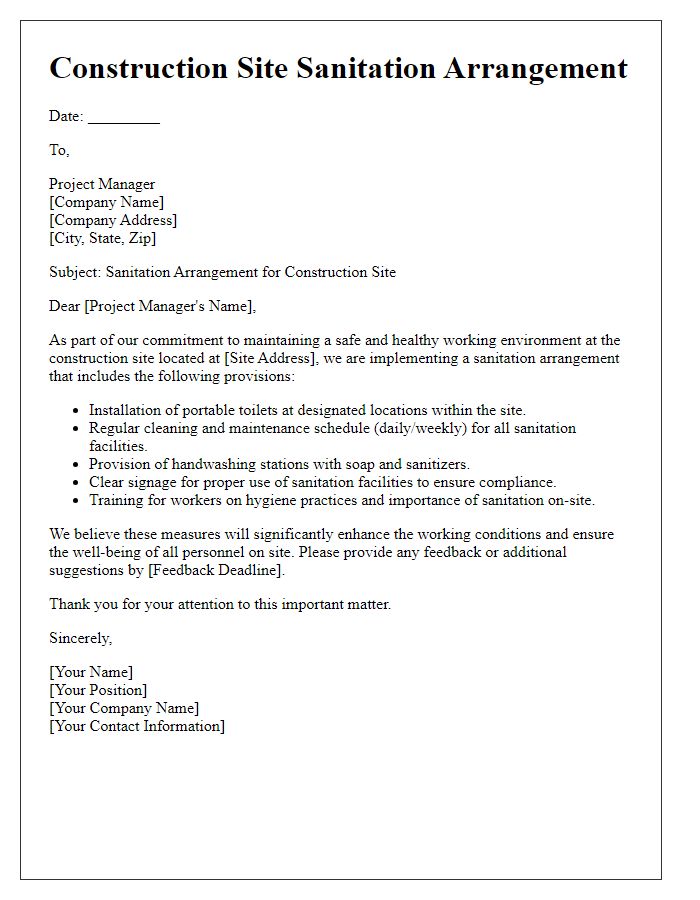
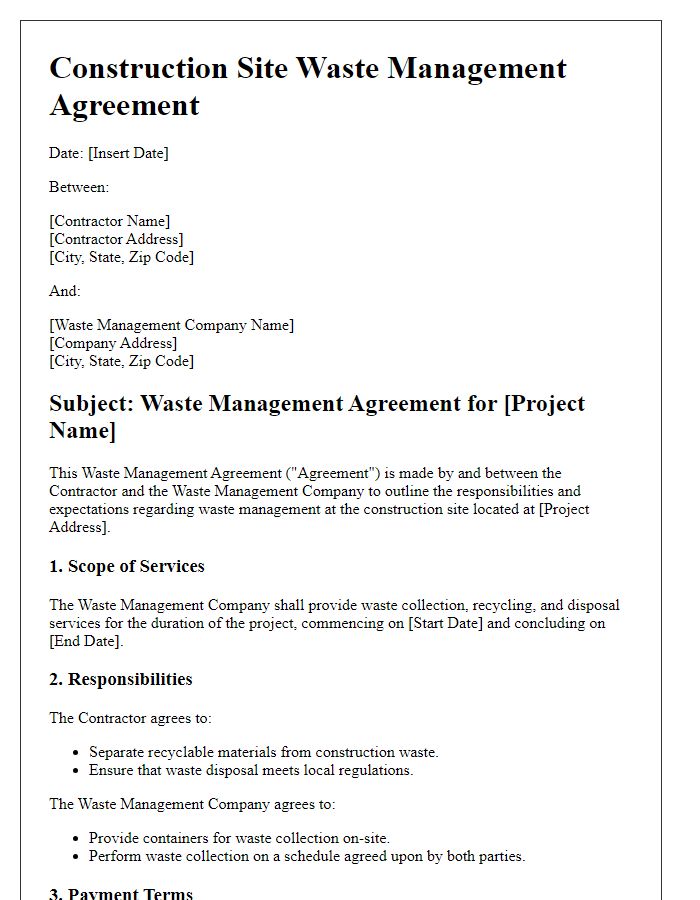
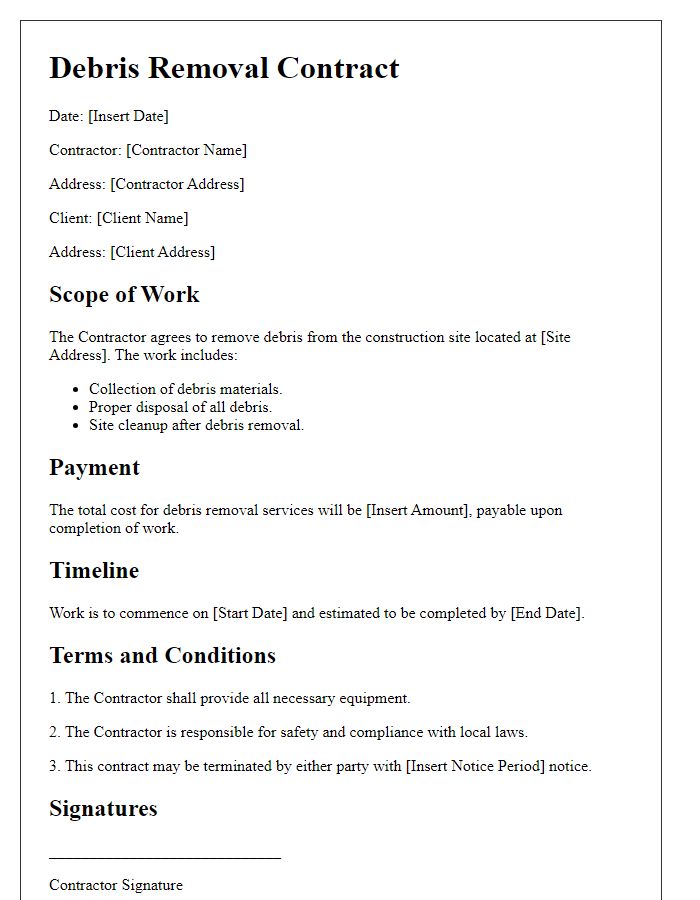
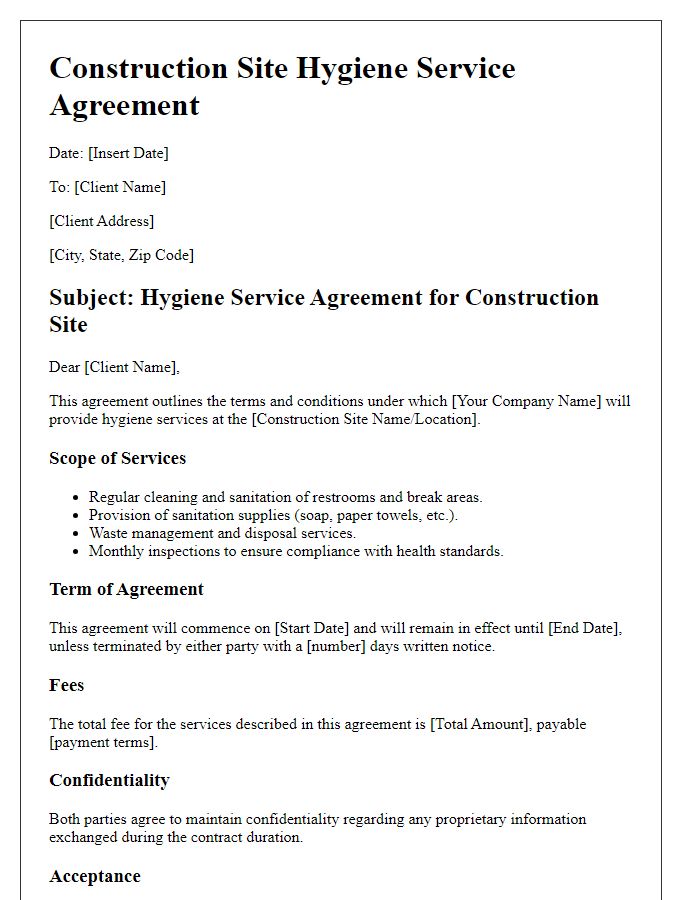
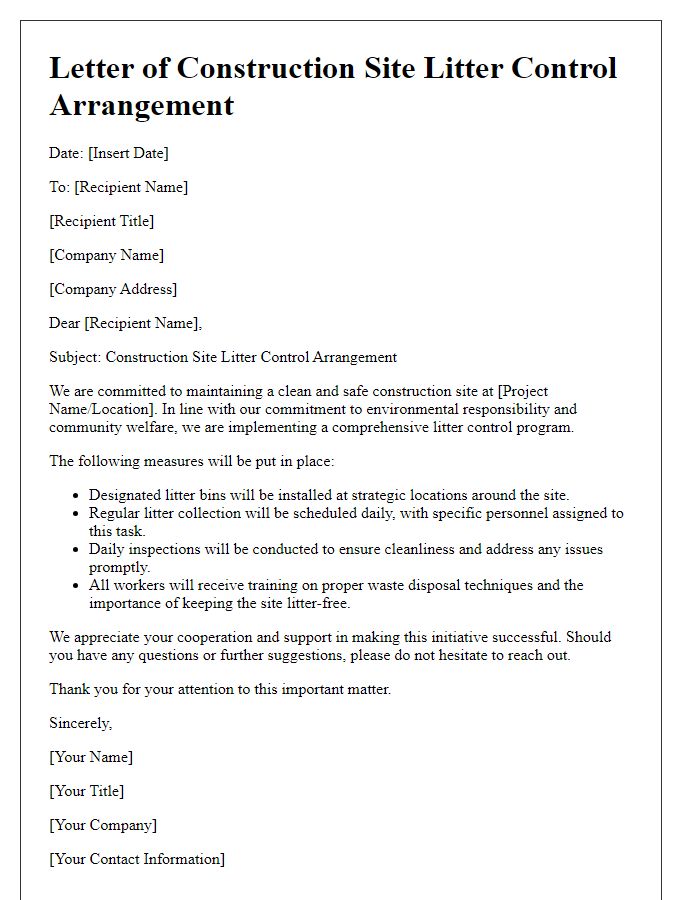
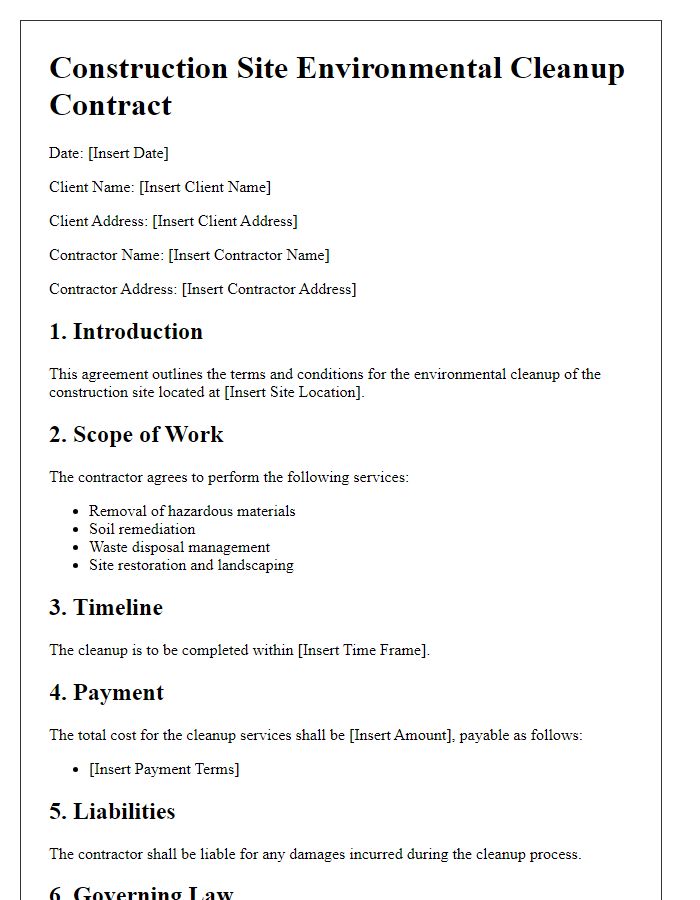
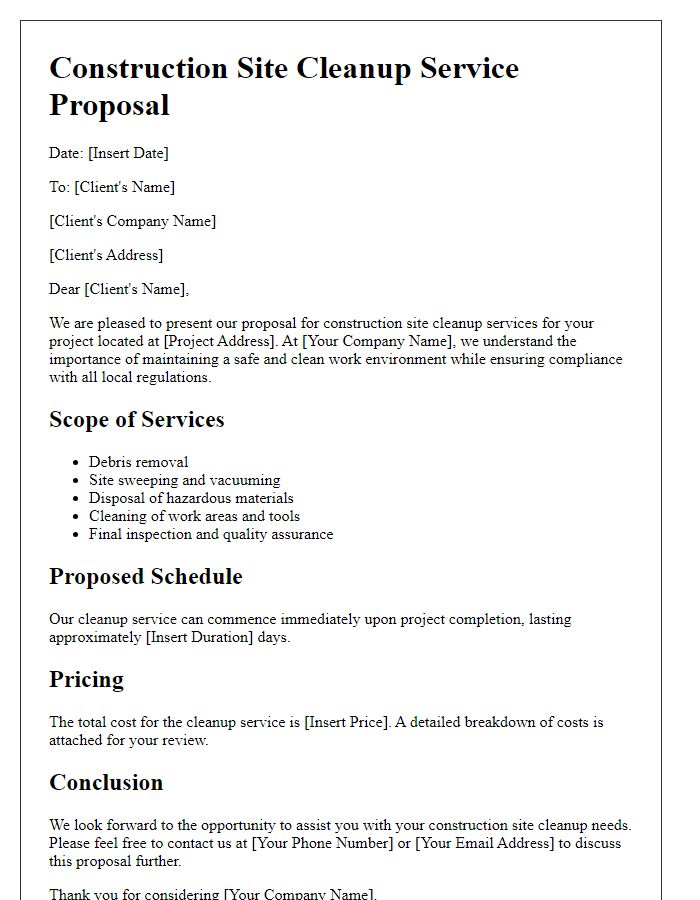
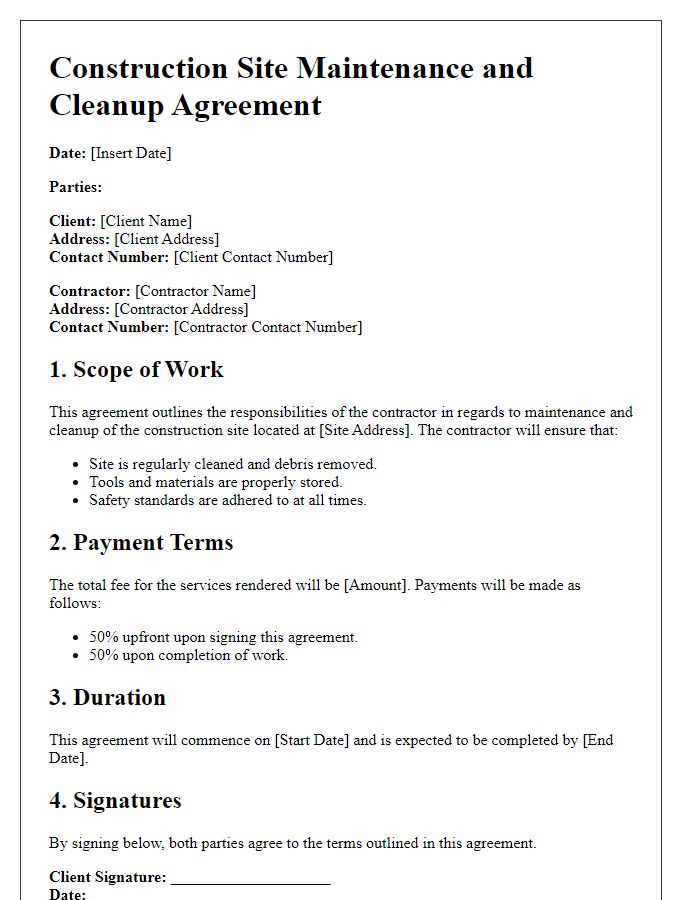
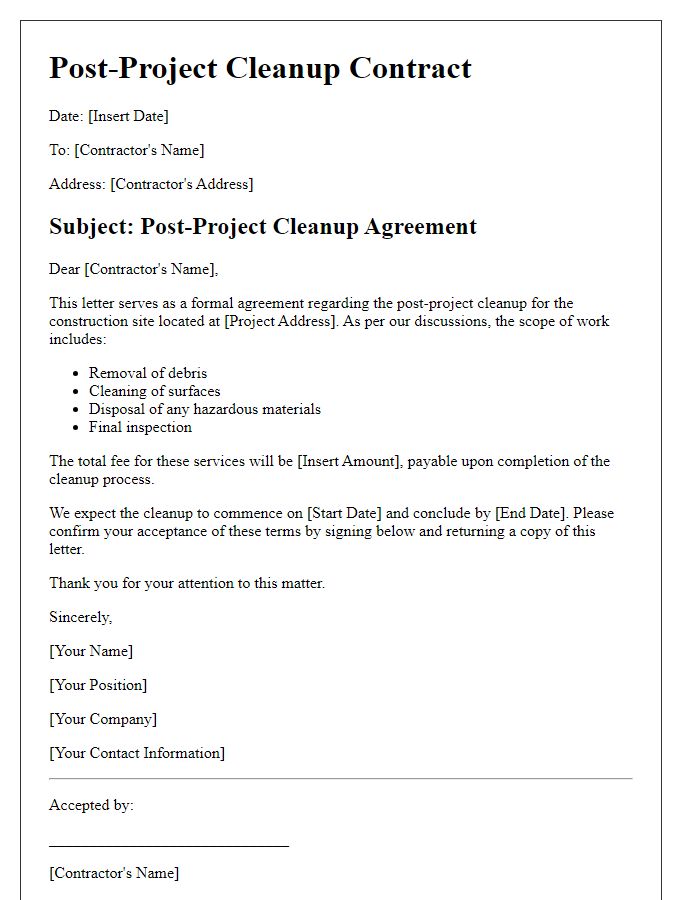


Comments